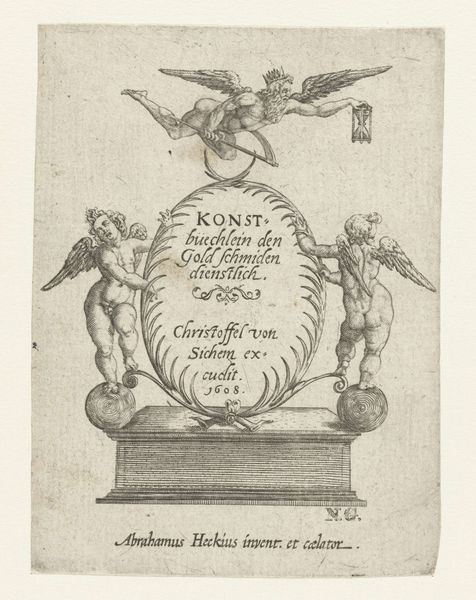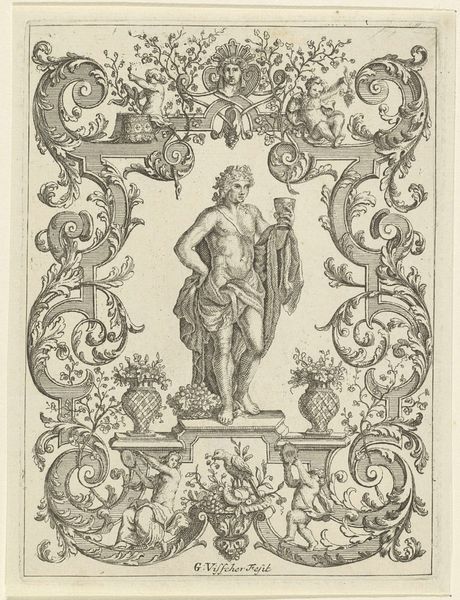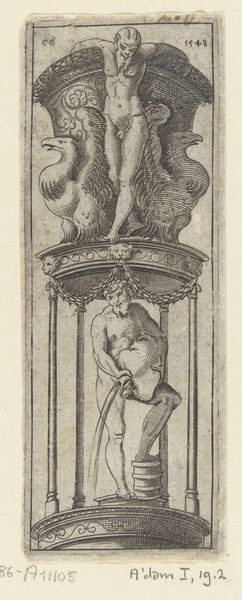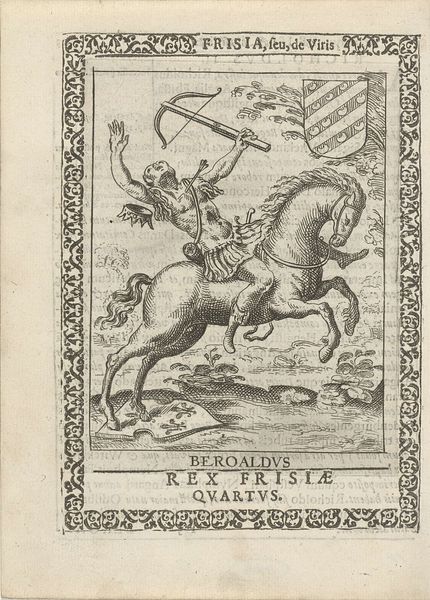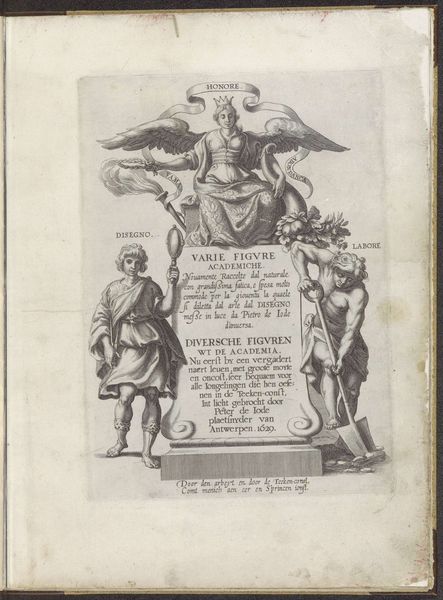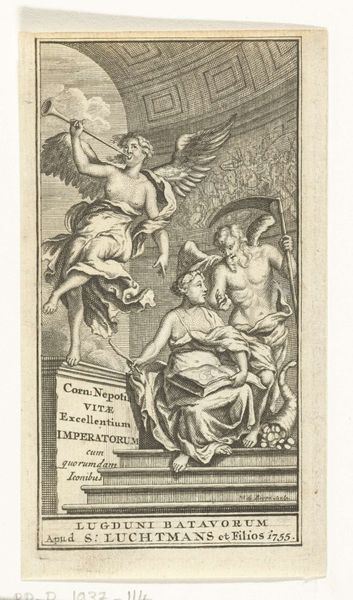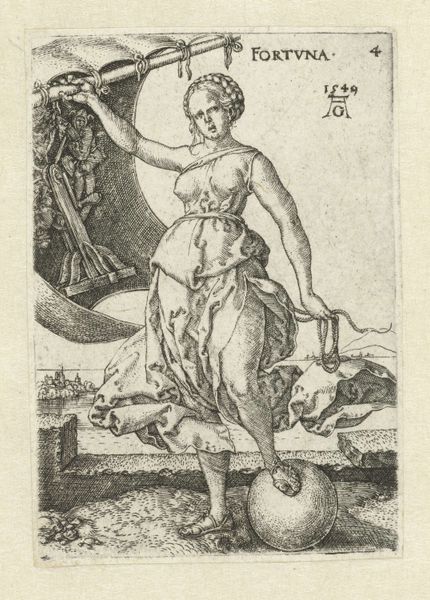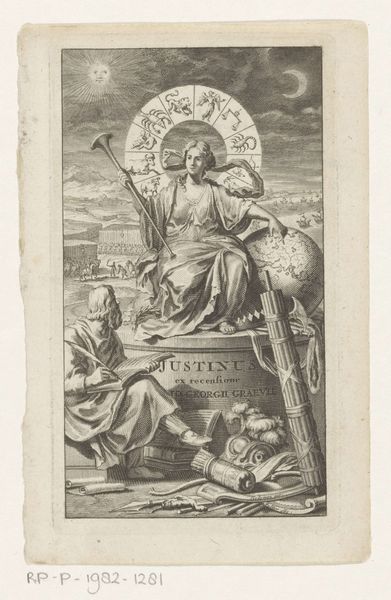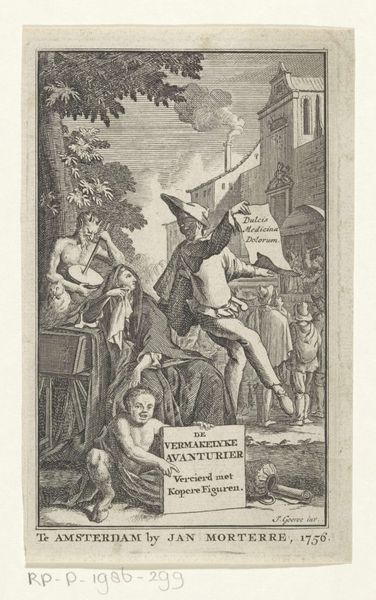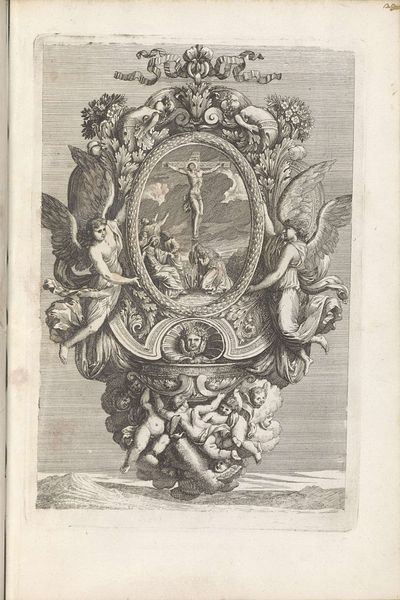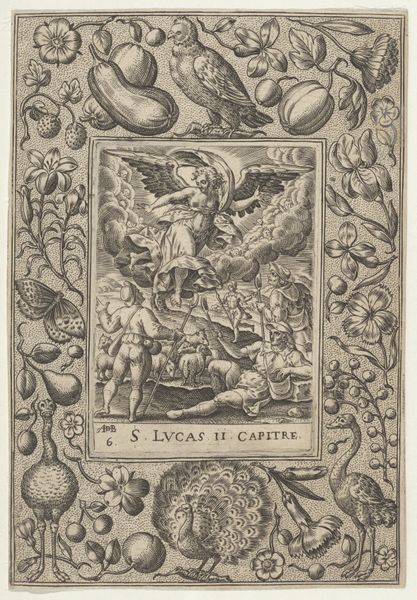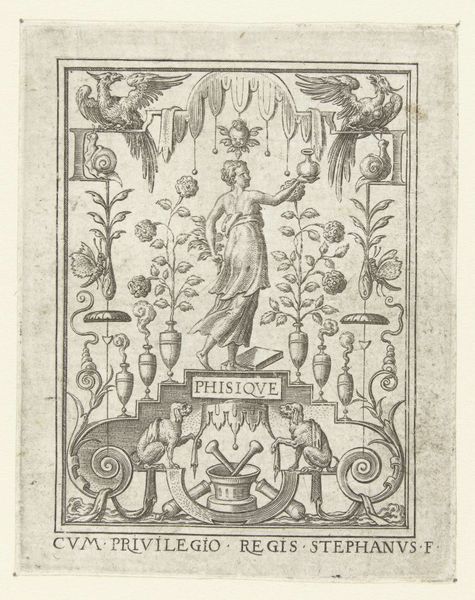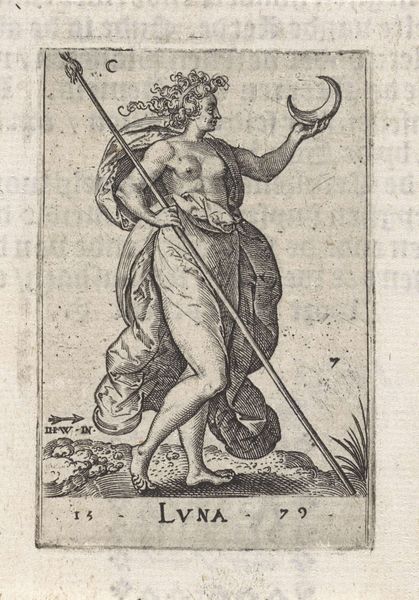
Titelpagina voor: Het Européis magazyn der byzondere zaken, in het ryk der natuur, in de staaten, en in de wetenschappen voorvallende, 1754 1754
0:00
0:00
print, engraving
#
portrait
#
allegory
#
baroque
# print
#
old engraving style
#
figuration
#
geometric
#
line
#
pen work
#
history-painting
#
engraving
Dimensions: height 165 mm, width 104 mm
Copyright: Rijks Museum: Open Domain
Curator: This engraving, dating back to 1754, functions as the title page for "Het Europees Magazyn," a journal of noteworthy European affairs in nature, statecraft, and science. Cornelis van Noorde is credited as the artist. Editor: It feels like a confident declaration. This winged figure stands with such dominion atop the globe, balanced amongst the turbulent clouds and these stacks of books… an optimistic image of Enlightenment ideals. Curator: Indeed. The figure is an allegorical representation of Fame, wouldn’t you agree? She stands on a globe which represents the world over Europe has influence; notice the placement of her feet over Europe? She carries both a laurel wreath, symbolizing knowledge and achievement, and a trumpet, used to proclaim the journal's contents across the land. Editor: So she quite literally embodies Europe's self-regard. What does "Multum in Parvo" signify? The Latin phrase inscribed above seems important here, in terms of unpacking colonial ambition and scientific drive. Curator: "Much in little." Precisely! Think of it in terms of a concentrated essence, everything relevant is compiled within. To me it hints at the European desire to summarize, collect and classify everything it finds. You see this ethos not just in encyclopedias and world atlases from the period, but also the very practice of European museums like the Rijksmuseum where this print now resides. The natural world organized as the personal treasury of European power. Editor: The style speaks to a certain order; there's a real sense of purpose. You look at the cross-hatching, creating a very organized scene, but there are troubling aspects to how knowledge is wielded. This confident vision must be set alongside its implication: this accumulation comes at a human cost. Curator: It does provoke reflection on how knowledge is gathered and used. It encourages us to consider its origins and whether some voices were heard at the expense of others. I also wonder: can visual symbol systems truly escape their ideological framework? Editor: That's precisely what makes this print so compelling: its artistic declaration allows us space to discuss it, as cultural symbols take shape during complex political periods in history. It opens a way to revisit Europe's legacy with questions about appropriation and fairness at its core.
Comments
No comments
Be the first to comment and join the conversation on the ultimate creative platform.
